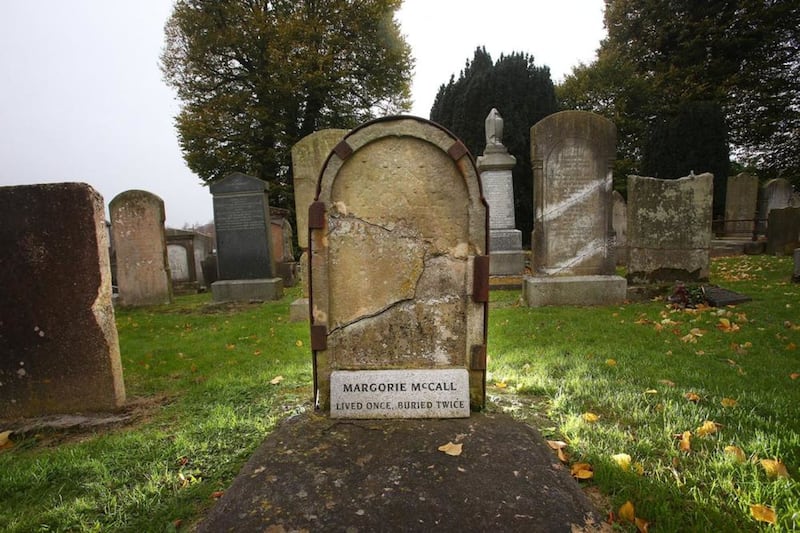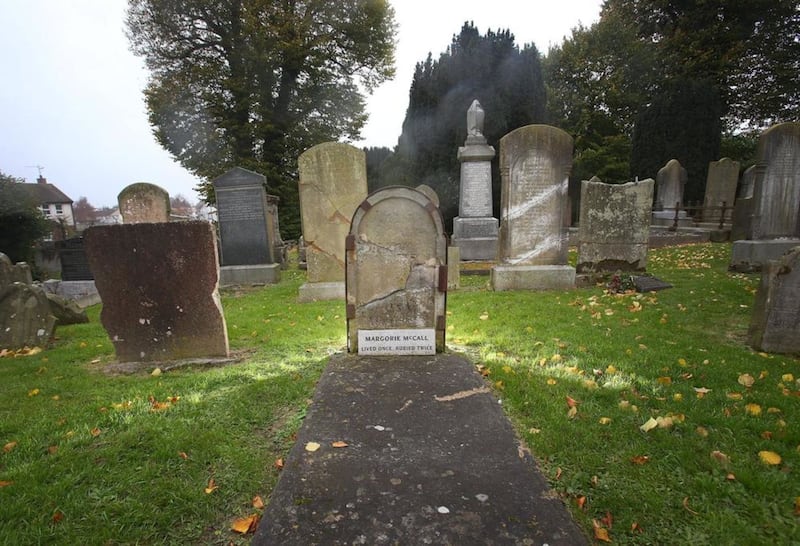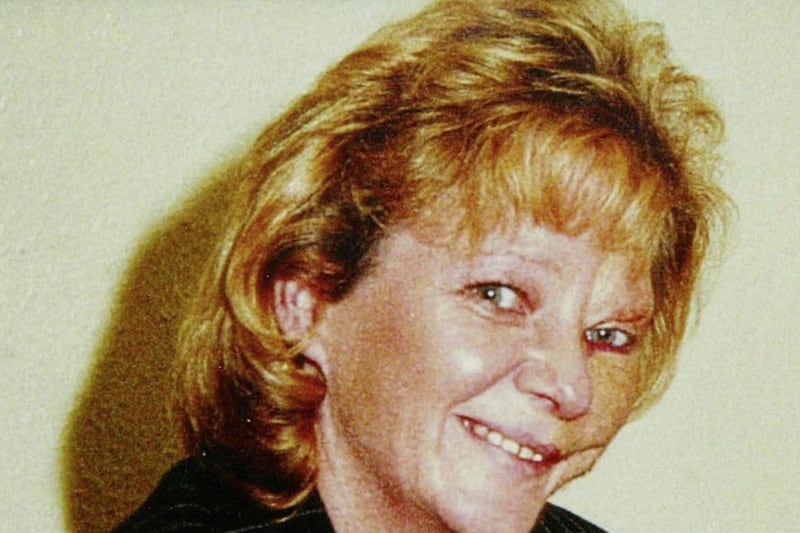A GRAVE at Lurgan's Shankill Cemetery has been known to stop visitors in their tracks with its intriguing headstone about a woman who reputedly 'lived once but was buried twice'.
The headstone, reportedly dating back to the 1700s, belonged to Lurgan woman Margorie McCall with an epitaph which reads: "Lived Once, Buried Twice."
According to folklore Margorie, from Church Place, was married to a doctor named John and at one point was struck by illness, eventually succumbing to a fever.
She was hastily buried to prevent the sickness spreading.
However, she became the target of grave robbers when word got round that she had been buried along with her expensive wedding ring.

The 'Resurrectionists', as they were known however got a fright whenever they attempted to prise the ring from the her finger as Margorie wasn’t dead but in a fever-induced coma.
Springing from her grave, the recently 'resurrected' stumbled home and knocked on the door.
When he answered and saw his supposedly dead wife, John McCall dropped dead from shock.
It is said that Margorie went on to live a long life and when she was buried, for the second time, the gravestone was erected and the legend was born.

David Weir, outreach assistant at Craigavon Museum Services, said although the legend has all the ingredients for a Halloween tale, its authenticity is doubtful.
"I think the story is that the gravestone was erected sometime later in the mid-1800s by a local stonemason who perhaps was capitalizing on the popularity of the legend which had grew up around the graveyard to publicise his craft," he said.
"However, despite all this I don’t think we should let the truth spoil a good story."





